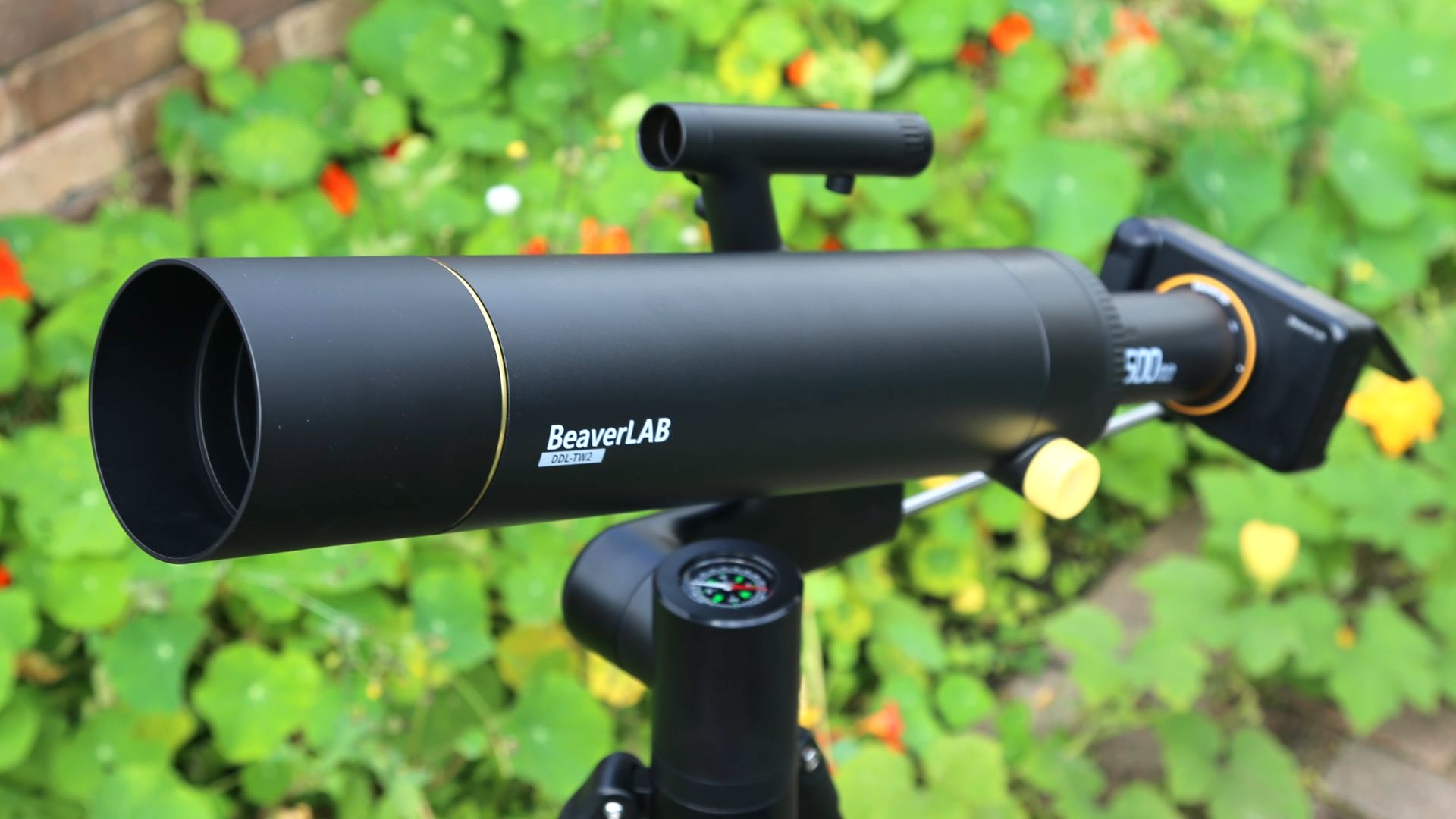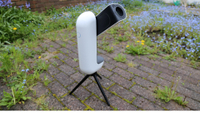Digital Camera World Verdict
Touted as the last word in astrophotography, the Finder TW2 cannot track objects, suffers from poor build quality and has no fine-tuning controls. However, it does reasonably well with the moon and sun.
Pros
- +
+ Extremely lightweight
- +
Affordable price
- +
Includes planetary camera
- +
Has a solar filter
Cons
- -
No fine-tune tools
- -
Poor build quality
- -
Soft-looking images
- -
Camera and app freezes and crashes
Why you can trust Digital Camera World
If you've ever tried afocal astrophotography, the BeaverLAB Finder TW2 may be for you. Holding a smartphone camera up to the lens of a telescope is tricky, and while it is possible to create spectacular images of the moon, it's trial and error. Step forward the BeaverLAB Finder TW2, a refractor telescope that eschews smartphone telescope adapters and goes instead for something that makes it unique: its own digital camera.
Does that make the Finder TW2 a smart telescope? No, it does not. This is a dashcam-style camera piggybacking on a manual telescope. The concept may be novel, but it lacks the niceties of a smart telescope – chiefly its inability to self-align or a motorized mount to automatically slew to objects and keep them in the field of view.
However, by promising to take images of everything from the moon and sun to deep-sky objects and be usable during the day, can the Beaverlab Finder TW2 get anywhere near the best telescopes for astrophotography?
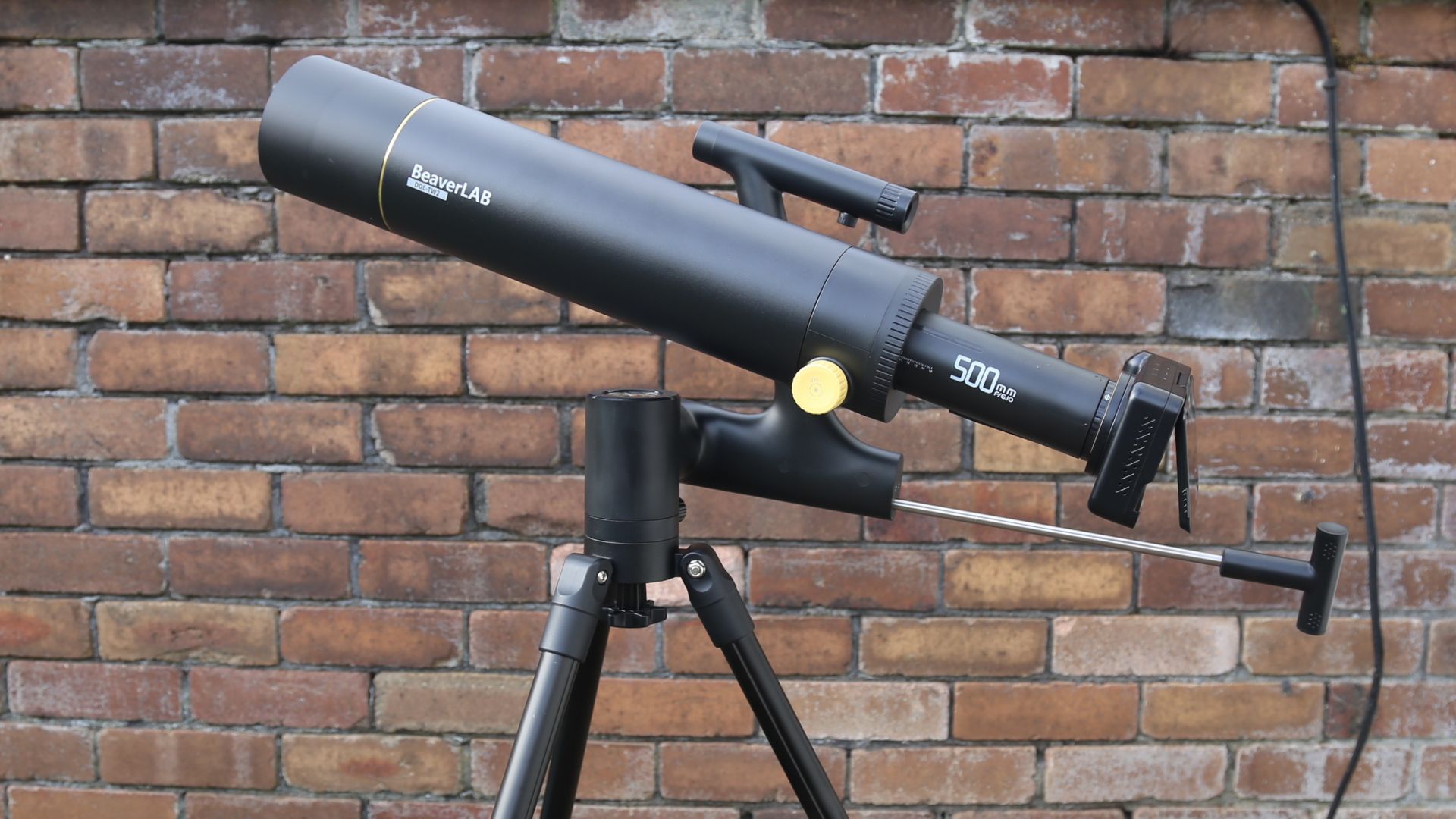
BeaverLAB Finder TW2: Specifications
| Sensor: | 1/1.8-inch CMOS sensor |
| Aperture: | 82 mm/3.2-inch |
| Focal ratio: | f/6.1 |
| Focal length: | 500 mm/19.69-inch |
| Optics: | 85mm/3.4-inch reflector |
| Storage: | 30 GB |
| Connections: | USB-C |
| Mount: | Altazimuth |
| Battery capacity: | 6,000 mAh (six hours run-time) |
| Weight: | 3.8kg/8.38lbs |
| Dimensions: | 190x85mm/48x3.4-inches (telescope tube) |
BeaverLAB Finder TW2: Price
The Finder TW2 is currently being promoted on Indiegogo and is due to go on sale in September 2024, costing $499/£378. That compares to the company's Finder TW1, which sells for $299 / £227 / AU$549.
Accessories in the box include the Starlight Camera DS1 (manufactured by dash cam-maker Novatek), a remote control, a 0.5x focal reducer, a solar filter, a data cable, a handy planisphere, a portable bag, a tripod and a finderscope.
Disclaimer
Be cautious when backing products on crowdfunding sites like IndieGogo, as there are no refunds if you change your mind, and no guarantees that you will receive the product should development be canceled. BeaverLAB is an established name, and we had hands-on with the BeaverLAB Finder TW2 and can verify it is a legitimate product, but we don't endorse crowdfunding sites. If you have any doubts, we would suggest waiting until it hits store shelves.
BeaverLAB Finder TW2: Design & Handling
Despite looking like an oversized webcam from the last century, the 367g/12.96ozlbs Starlight DS1 camera has a sizeable five-inch touchscreen (1280x0720 pixel resolution) that conveniently folds out. Attached to the telescope in place of a 1.25-inch eyepiece — but also including one to focus light on its 1/1.8-inch CMOS sensor — the DS1 can record 3840×2160 resolution still images (JPEGS) and 4K video at 60/30/25/24fps (MP4). It's an upgrade on the Finder TW1, which has a 1/2.8-inch device, a shorter focal length, and no touchscreen camera. The DS1 can be used with any telescope that takes 1.25-inch eyepieces. That's most of them.
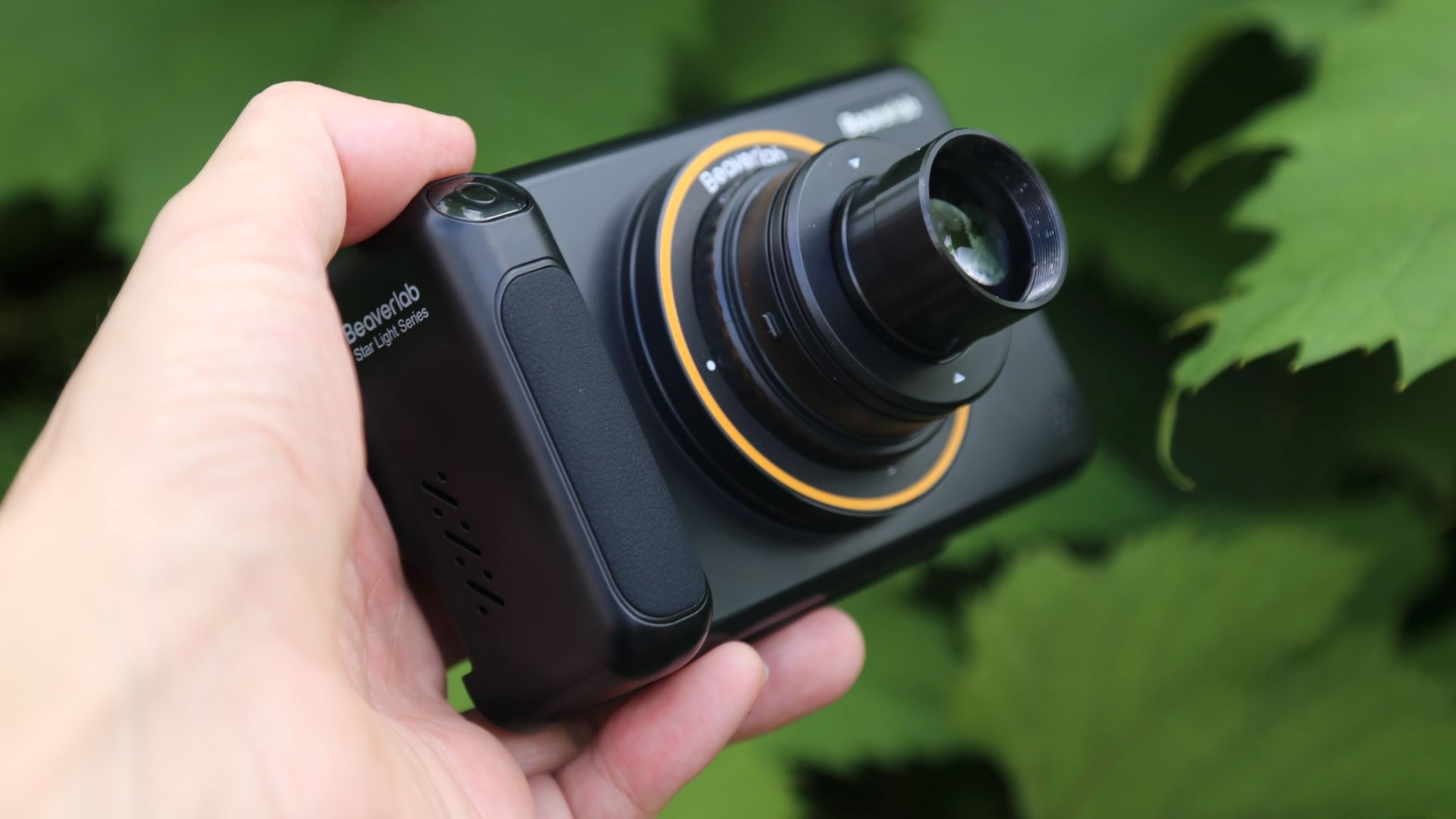
The Finder TW2 is far from a smart telescope; it can't align with the night sky and lock on to targets autonomously, nor does it have built-in planetarium software. Everything you see and capture using the Finder TW2 must be navigated manually. In short, you have to know the night sky well – and have bags of patience with the Finder TW2's shortcomings.
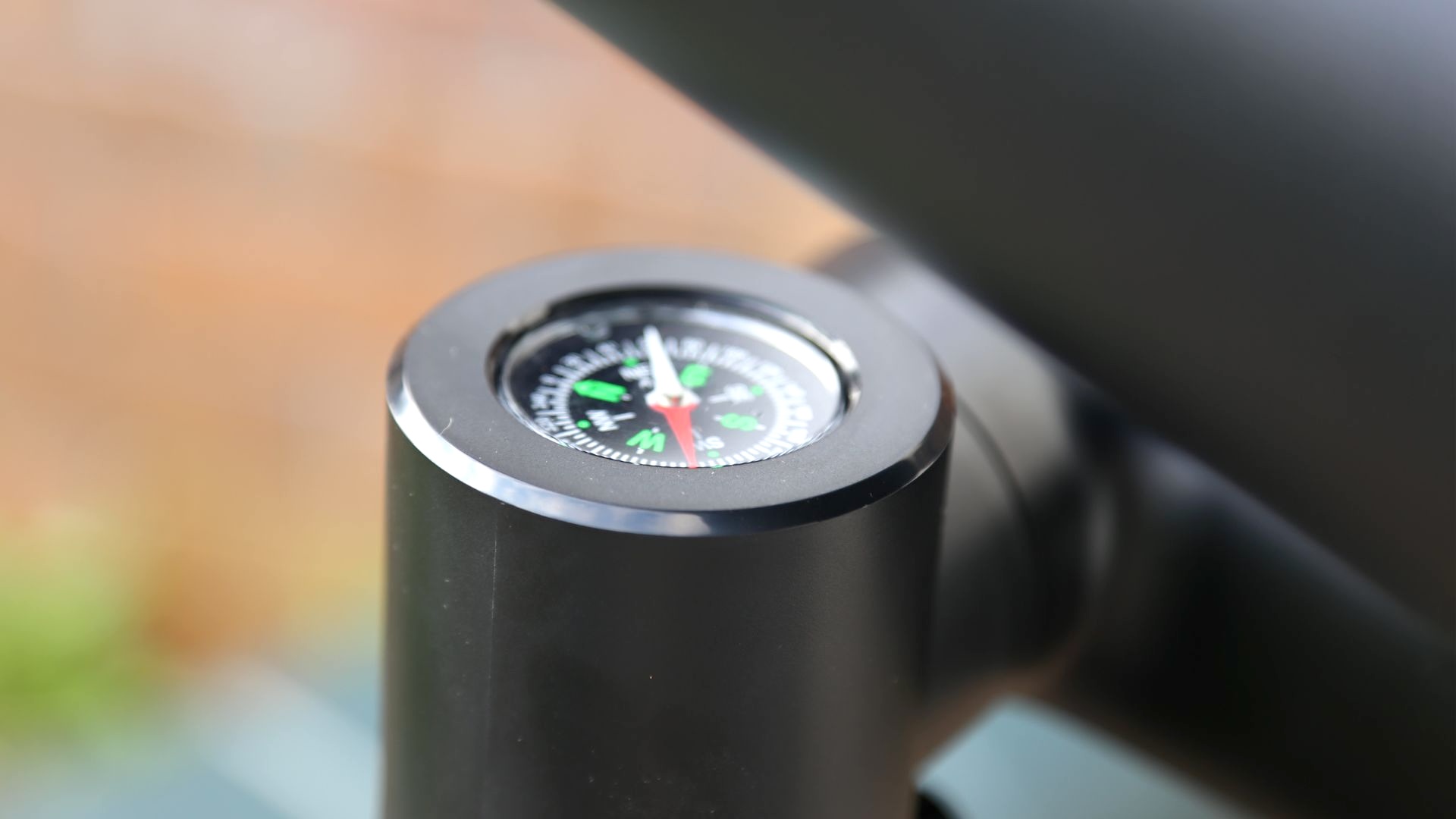
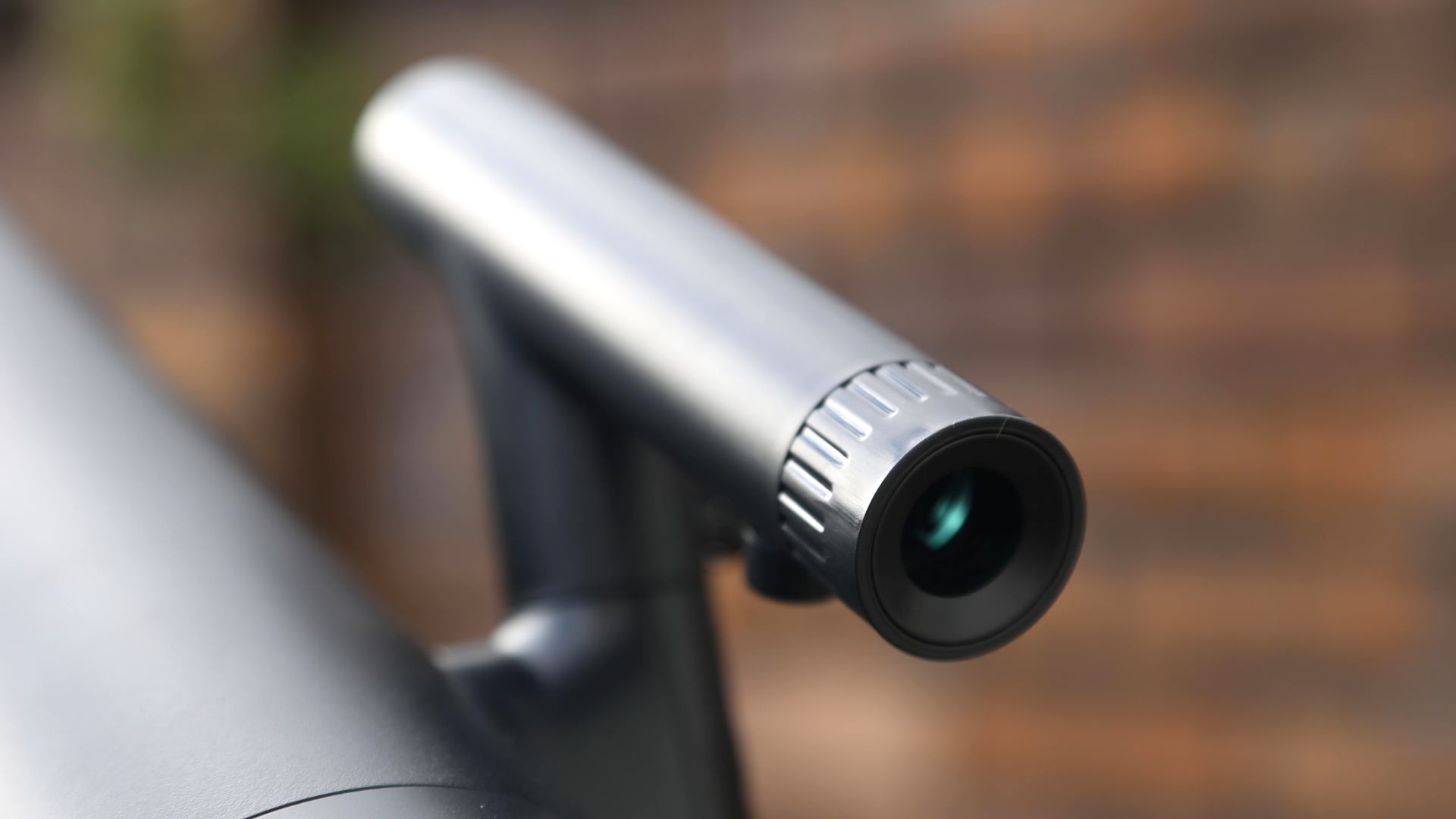
Even if you can navigate the cosmos, manually locking on targets proves difficult on the Finder TW2. It's necessary to loosen a few knobs on its mount to move its optics, but tightening them once in position is difficult. Sure, it locks the optics, but the entire telescope suffers from droop, so the object is immediately lost. It's therefore necessary to learn the hardware's defects and compensate for them, for example, moving beyond the object so, once tightened, the telescope comes to rest while pointing at your intended target. It's not difficult to point it at the moon, but without a motor or an equatorial mount, constant tweaking is required to account for Earth’s rotation. That’s difficult because no fine-tuning controls are onboard to help nudge the optics back on target. Once you've got a target in the telescope's crosshairs, focusing the image introduces such a significant movement that it takes a while to get the image — as seen either on the back of the camera, or on a phone using the Beaverlab app — dead-on sharp.
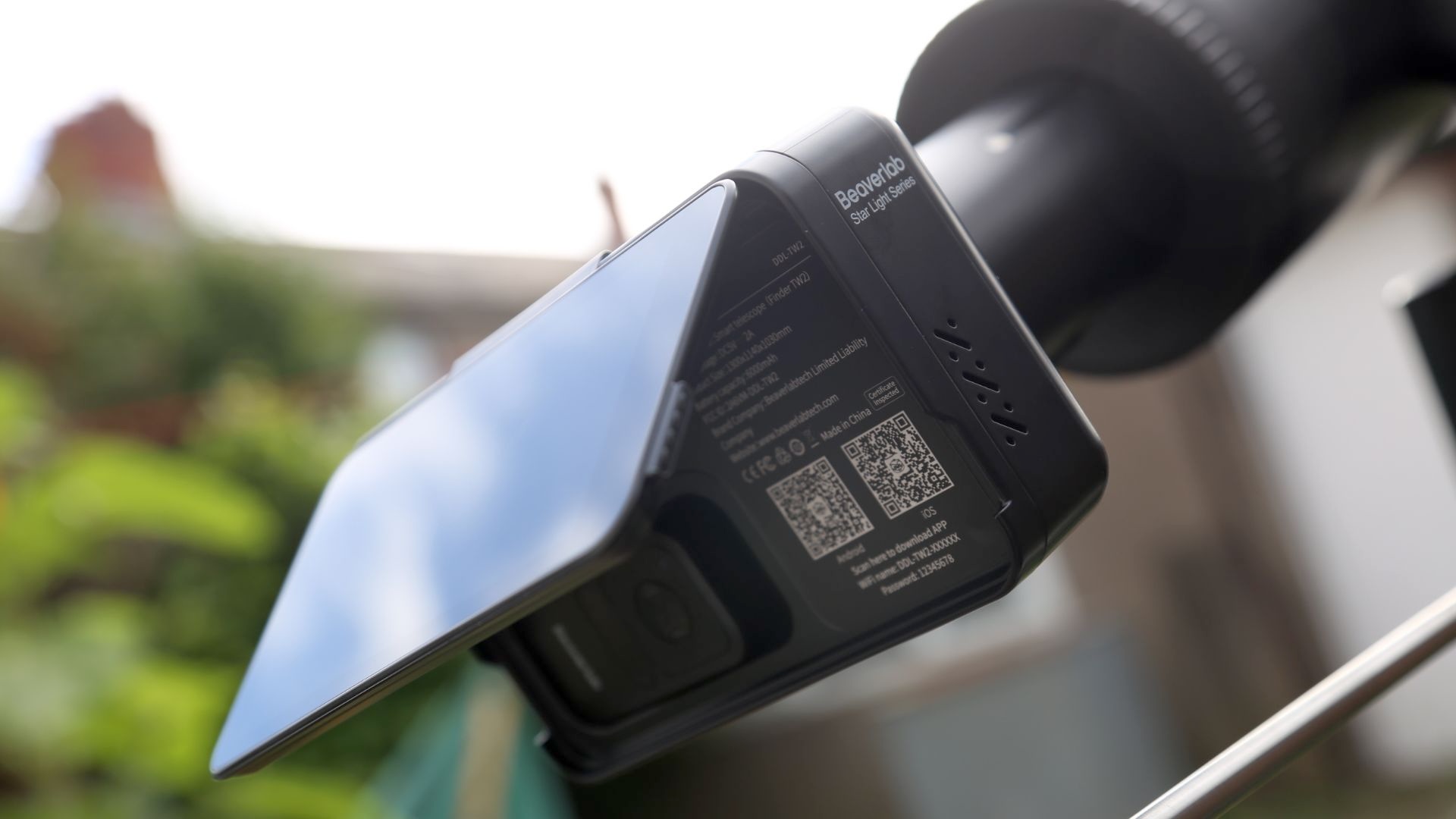
BeaverLAB Finder TW2: Performance
The Finder TW2 can take some interesting images of the moon and sun but little else. Once locked onto the moon, with the optics focused as best we could on this fast-moving target, the Finder TW2 does well. Images and video are impressively contrasty, though rather soft, and we did notice some chromatic aberration on the finished images. It's tricky to tweak image parameters when pressing the touchscreen itself, which introduces a shake that never really goes away. The touchscreen is of below-average quality and lacks sensitivity. Sadly, the Beaverlab app allows only remote viewing and digital zooming.
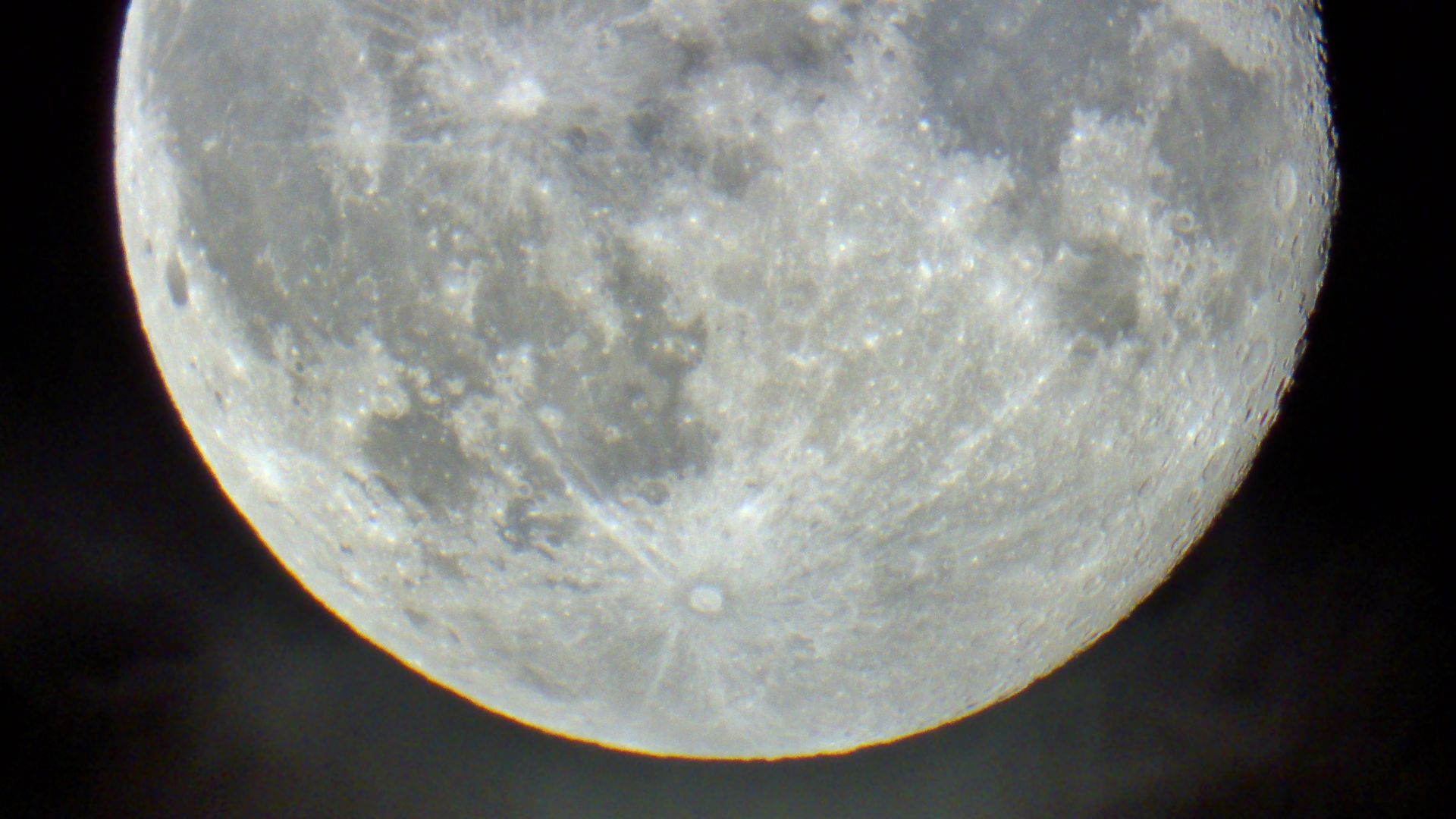
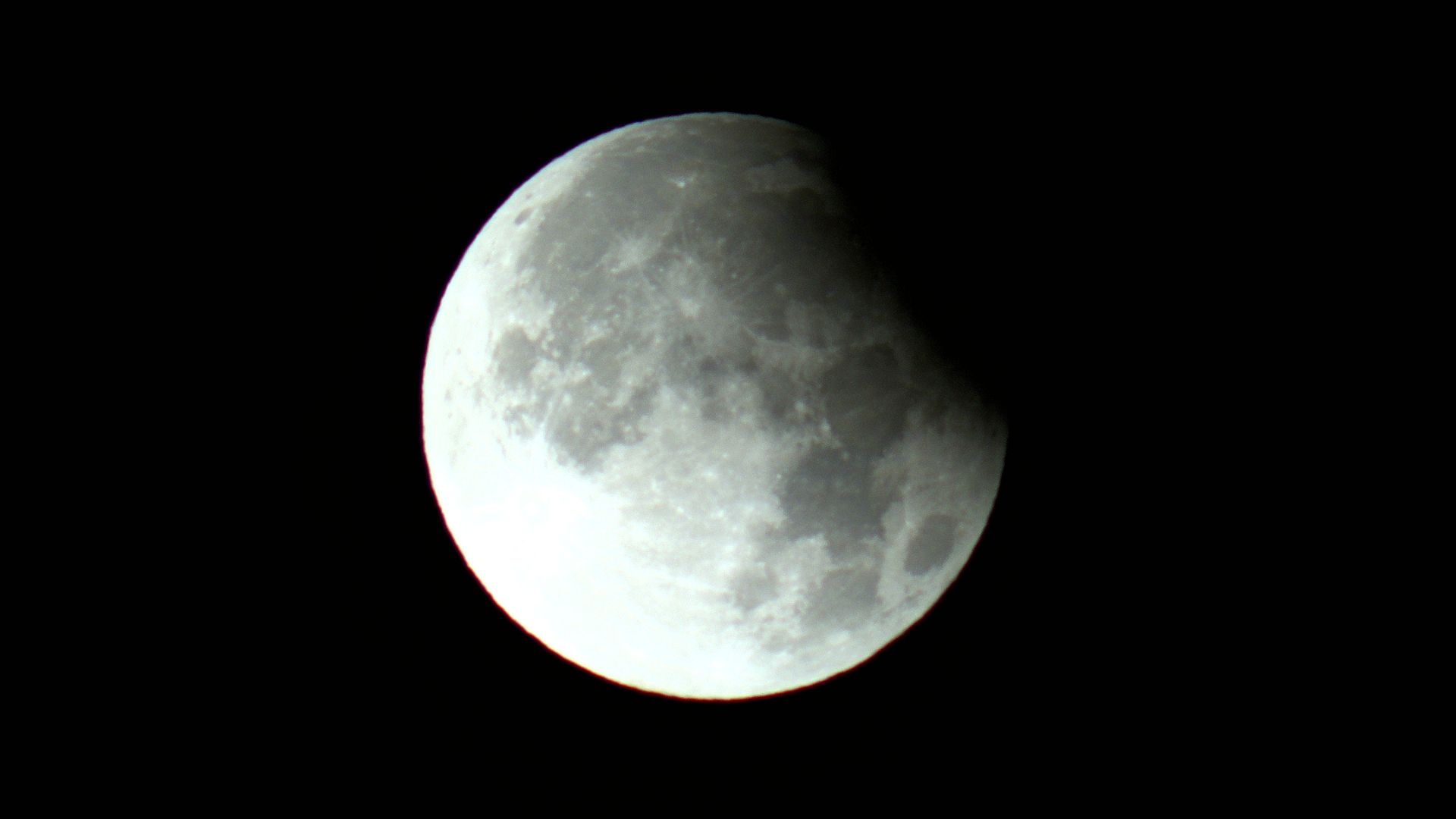
Pointing the Finder TW2 at the sun proved difficult; sure, there's a solar filter, but trying to locate a one-degree-wide object in the daytime sky using a telescope that blocks out all light except 1% of sunlight is not easy. Once we could observe our star, the images Finder TW2 took were enjoyable, highlighting the myriad sunspots on the sun in this “solar maximum" year.
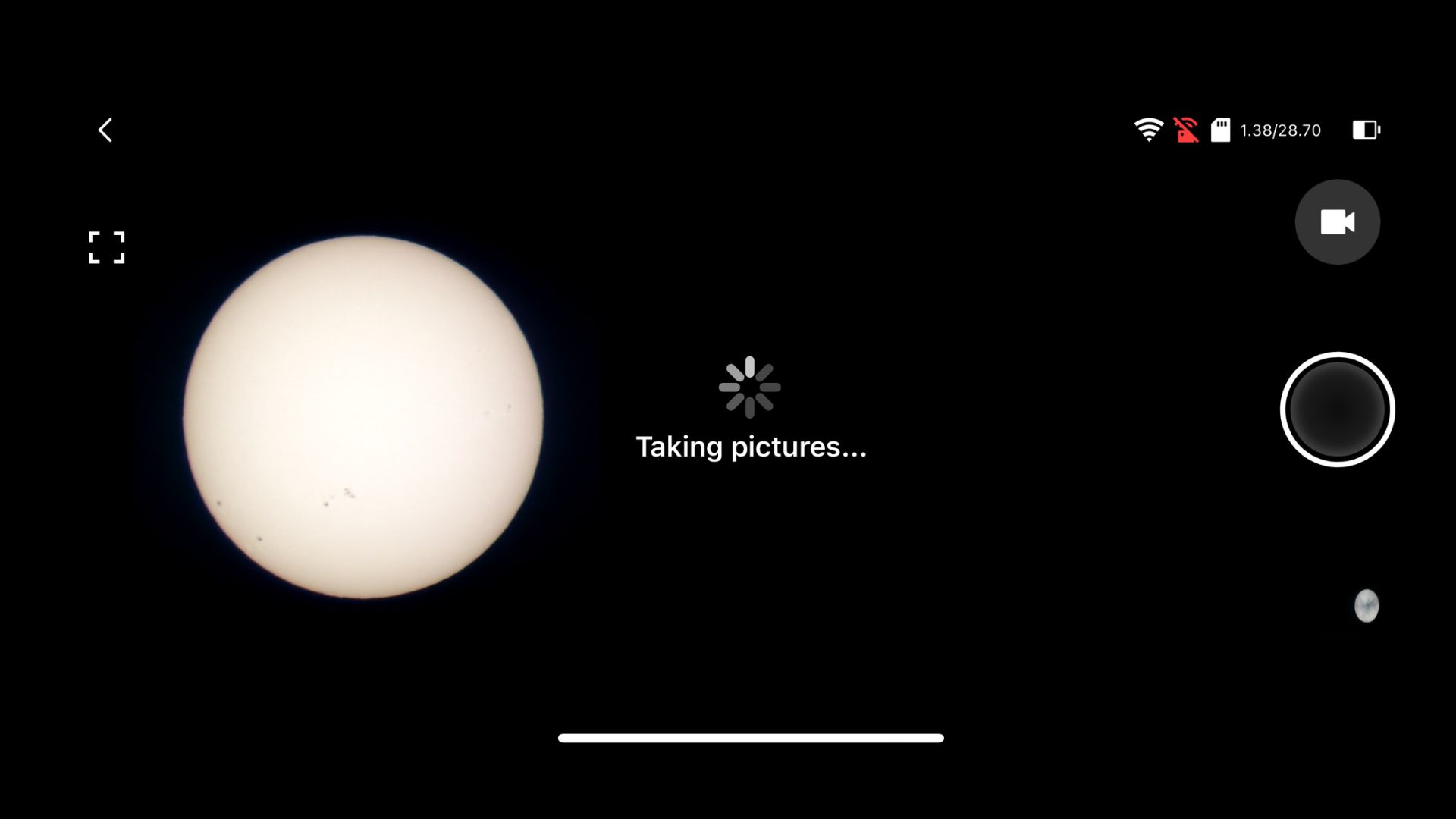
The final straw came when we tried to transfer images to a computer, a process that continually crashed the camera's OS, necessitating a reset. The app suffered a similar issue when downloading images and video to a smartphone’s camera roll.
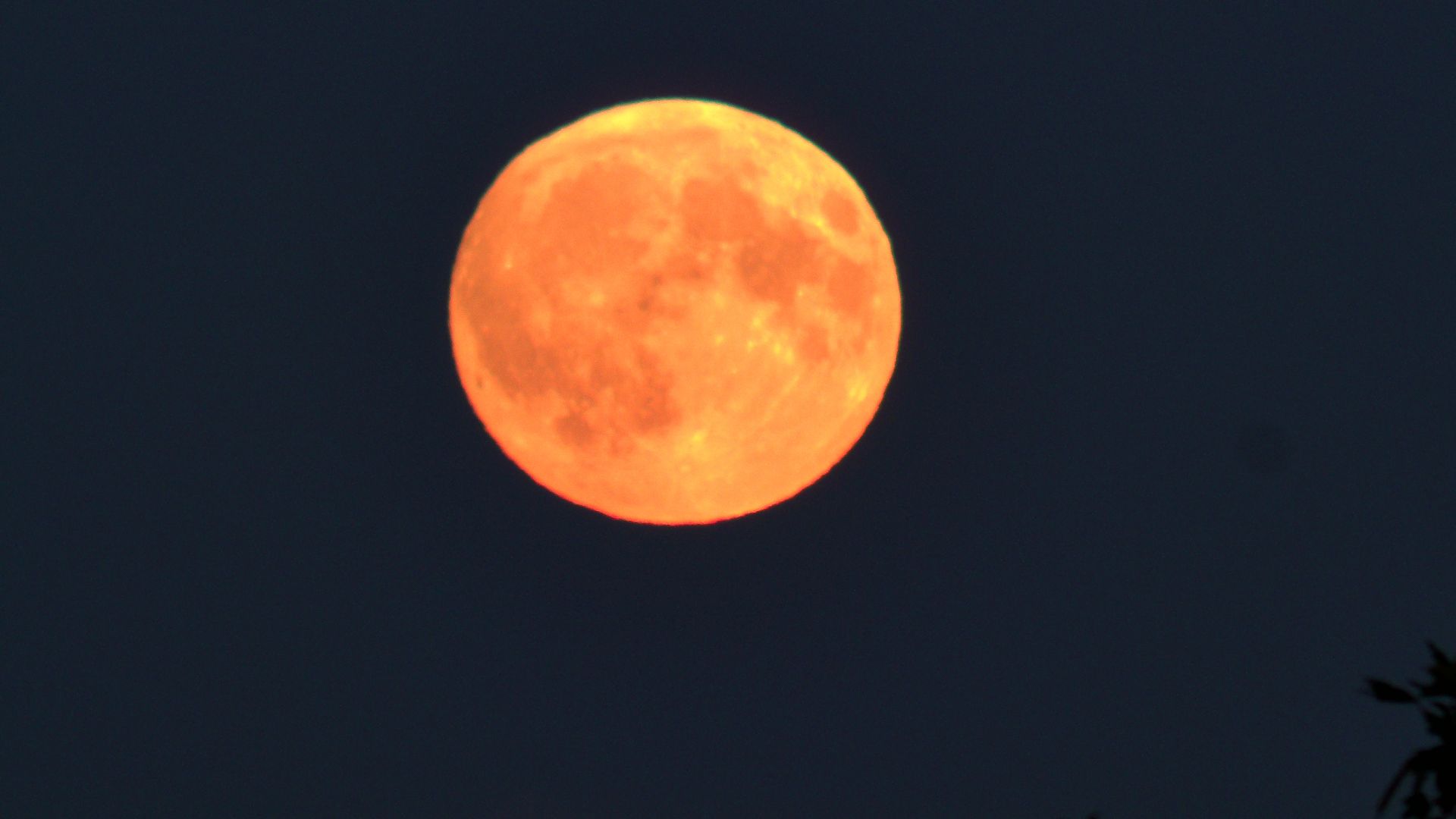
BeaverLAB Finder TW2: Verdict
The Finder TW2 is best thought of as a budget innovation. It can impress with its images and videos, as long as you don't expect too much. The entire rig is hamstrung by droop, a lack of fine-tuning controls to zero in on an astronomical target, and rather soft images. How long can taking basic images of the moon and sun stay interesting?
| Features | The promise of HD images and 4K videos on a telescope makes this a unique proposition, at least in theory. | ★★★☆☆ |
| Design | The concept of a simple, lightweight telescope with a twist-on camera is attractive, as is the product, but the build quality could be better. | ★★★☆☆ |
| Performance | With a mount that causes droop and inaccuracy and no fine-tuning controls, finding objects and keeping them in the Finder TW2's field of view is a constant battle. | ★★☆☆☆ |
| Value | It may be affordable, but plenty of better-value manual and even smart telescopes are available for the same (or less) outlay. | ★★☆☆☆ |
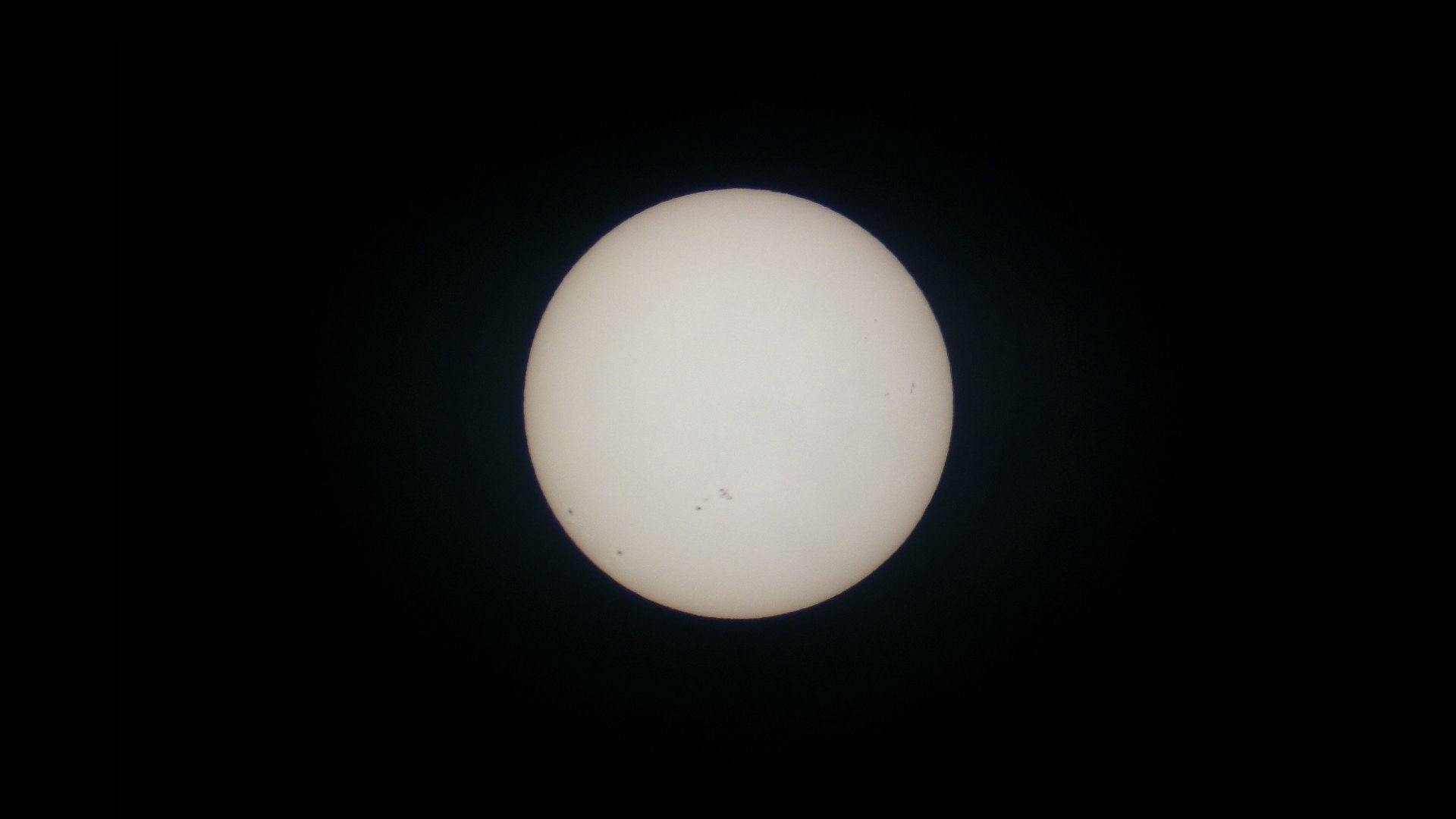
✅ Buy it...
- You want to image the moon: this telescope comes with a lightweight plastic camera that can be easily attached to capture images of the moon without the hassle of holding a smartphone's camera lens up to an eyepiece.
- You want to capture sunspots: the included solar filter makes it safe to take images of the solar surface and the clusters of sunspots currently visible most days.
🚫 Don't buy it...
- You want a solid, dependable product: a lightweight and plasticky build quality seriously affects its usefulness for observing the night sky and taking astro-images.
- You're not a patient person: this telescope cannot align with the night sky and lock on to targets autonomously, making the observation process completely manual.
Alternatives
Boasting the same resolution as Finder TW2 but adding a motorized mount and a much better app, this budget-busting smart telescope can image the deep sky, moon, and sun and is hugely superior.
More portable than Finder TW2 and with a higher resolution of 6.8 megapixels, this grab-and-go smart telescope can even stack and assemble panoramas of deep-sky objects and image the moon and sun.

Jamie has been writing about photography, astronomy, astro-tourism and astrophotography for over 15 years, producing content for Forbes, Space.com, Live Science, Techradar, T3, BBC Wildlife, Science Focus, Sky & Telescope, BBC Sky At Night, South China Morning Post, The Guardian, The Telegraph and Travel+Leisure.
As the editor for When Is The Next Eclipse, he has a wealth of experience, expertise and enthusiasm for astrophotography, from capturing the moon and meteor showers to solar and lunar eclipses.
He also brings a great deal of knowledge on action cameras, 360 cameras, AI cameras, camera backpacks, telescopes, gimbals, tripods and all manner of photography equipment.
